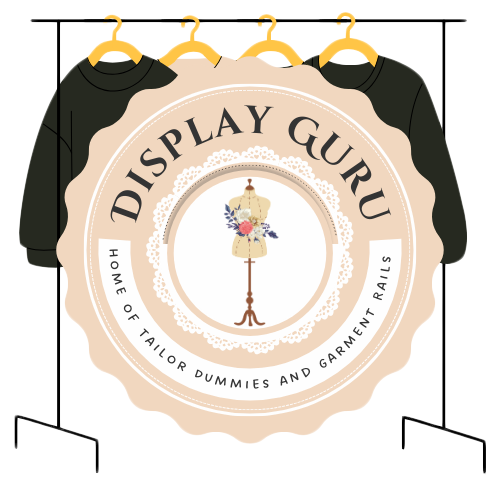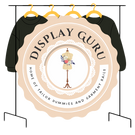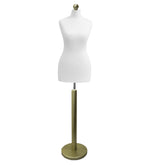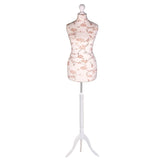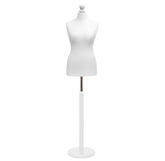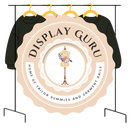Choosing Cutting Sewing Tables for Your Space
A proper cutting and sewing table isn't just another piece of furniture; it's the very heart of your creative space. Think of it like a chef’s prep station – absolutely essential for getting those precise, professional-looking results. Making the switch from a kitchen table or the floor to a purpose-built workspace is one of the biggest upgrades any sewing enthusiast can make.
Why a Dedicated Table is the Foundation of Your Craft
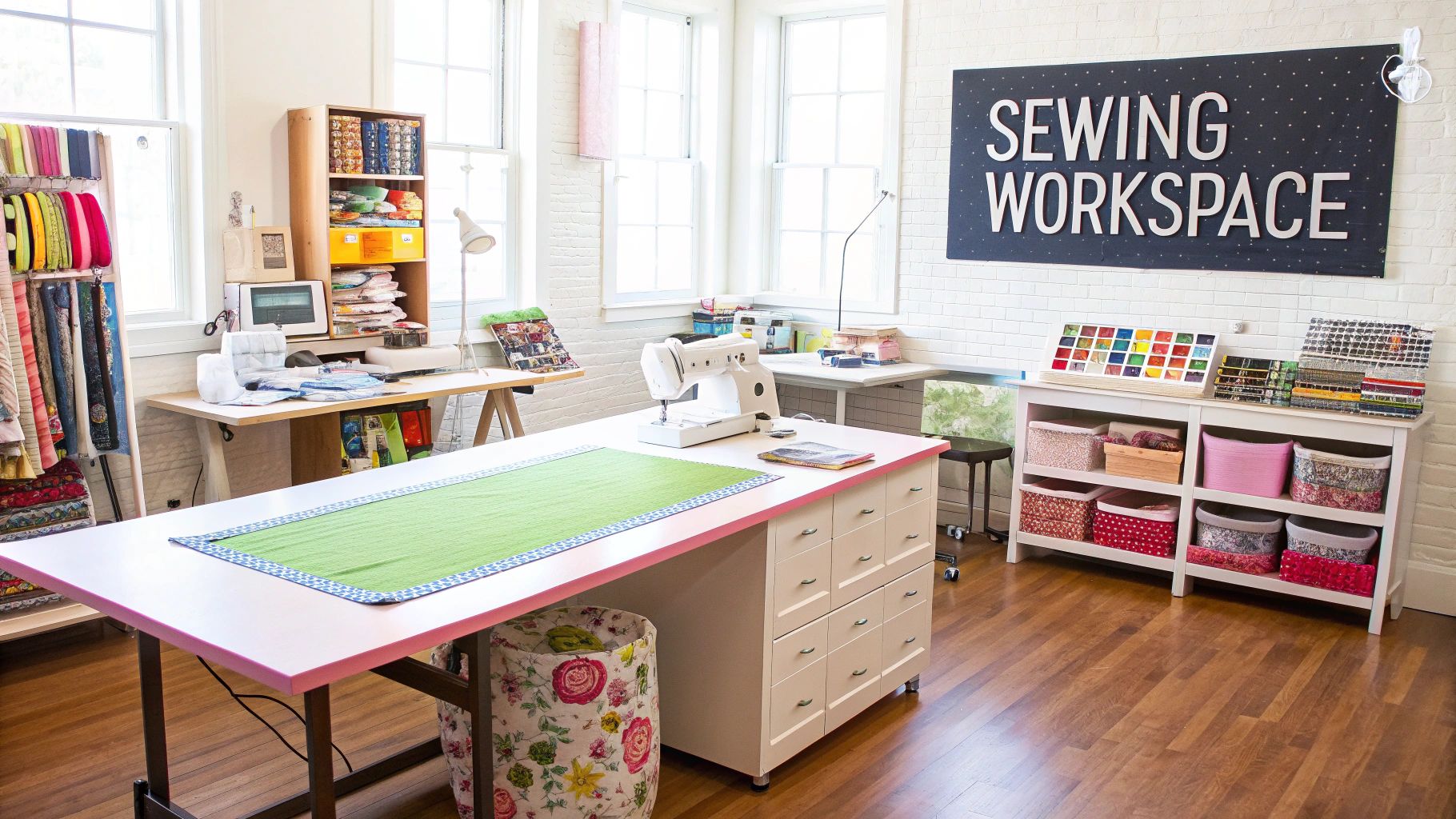
So many of us start out hunched over the dining room table, wrestling with fabric that won't lie flat and ending the day with a sore back. This is exactly why a specialised cutting and sewing table is so important. These tables are designed from the ground up to solve the very problems that everyday furniture creates, making the whole process smoother and far more enjoyable.
When you set up a proper foundation for your craft, you instantly improve three key things: your posture, your cutting accuracy, and the flow of your work. A table designed for sewing means you can finally stop fighting with shifting fabric and awkward positions.
Boosting Precision and Comfort
The single biggest advantage of a purpose-built table is getting the ergonomics right. Cutting fabric at a low table forces you to stoop over, which is a recipe for neck and back pain. A good cutting table is usually around counter-height, letting you stand comfortably with your arms at a natural, relaxed angle. This stability makes a world of difference, leading to cleaner, straighter cuts, especially when using a rotary cutter.
A dedicated workspace isn't a luxury; it's an investment in your health and the quality of your work. By preventing physical strain and improving accuracy, the right table allows you to focus purely on your creativity.
Streamlining Your Creative Workflow
Ergonomics aside, a great table brings a new level of organisation that can completely transform your efficiency. Having a large, clear surface means you can lay out entire pattern pieces without fabric bunching up or hanging over the edges. This simple change prevents distortion and helps you get every cut spot-on from the get-go.
If you're looking for more ways to create an efficient and inspiring workspace, you can find some fantastic sewing room ideas to help you make the most of your space.
Ultimately, having a table that's fit for purpose brings a sense of order and professionalism to your hobby. You'll produce better work with a lot less frustration.
Finding the Right Type of Cutting and Sewing Table
Choosing the right cutting and sewing table is less about finding the "best" one and more about finding the one that’s right for you. Think of it as the foundation of your creative space. Your decision will hinge on how much room you have, the kind of projects you love to tackle, and, of course, your budget.
Some tables are designed to be tucked away, while others are built to be the permanent, sturdy centrepiece of a professional studio. Let's break down the main types to help you find your perfect match.
Hobbyist and Compact Tables
For most of us, sewing has to fit into a life that's already busy. Our "sewing room" might also be the guest bedroom, the home office, or even a corner of the dining room. If that sounds familiar, a foldable or collapsible table is a brilliant solution.
These tables give you a generous, flat surface to work on when inspiration strikes, but they pack down neatly when you're done. You can slide them into a cupboard or lean them against a wall, reclaiming your space in minutes.
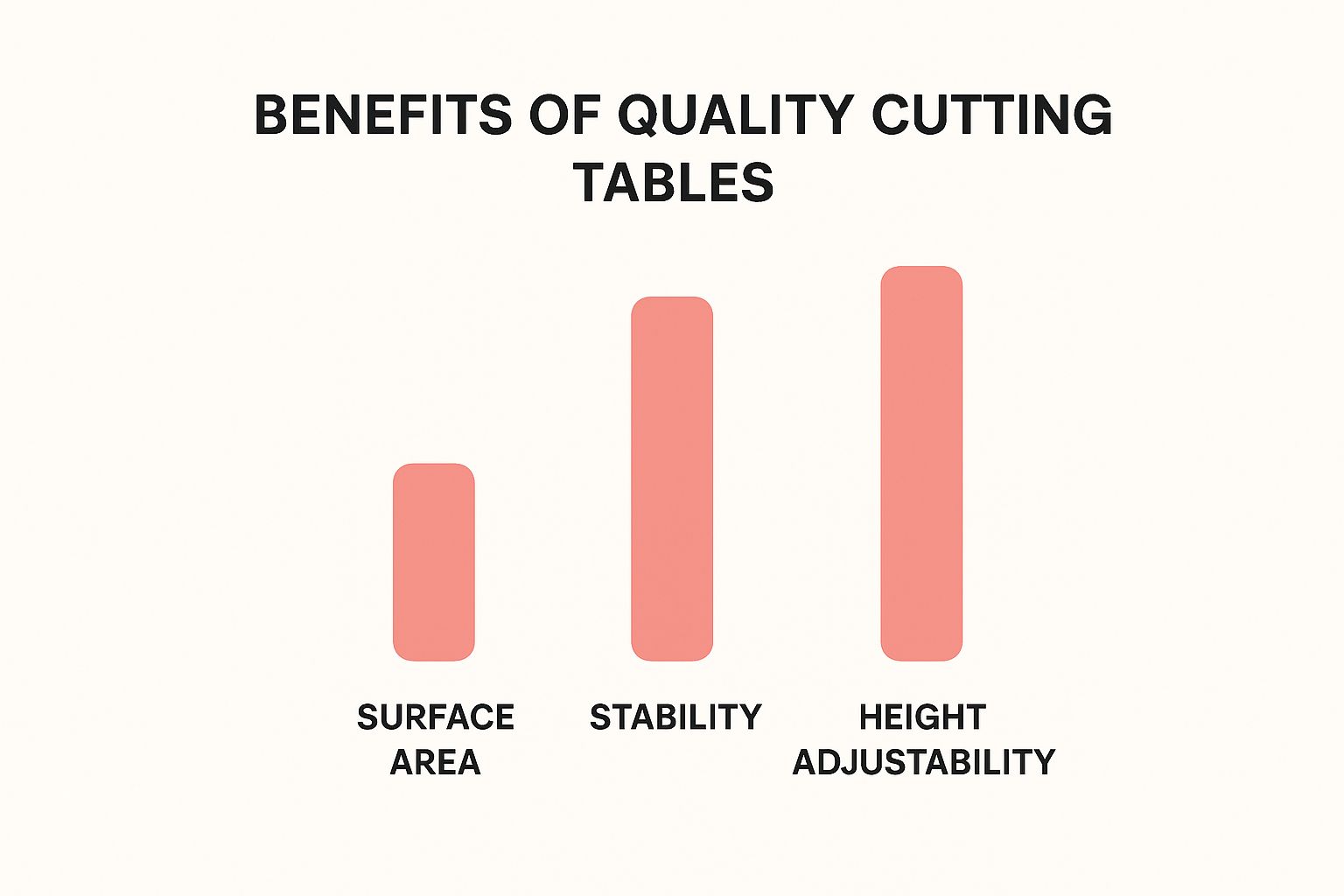
The main trade-off with most folding models is stability. They might not feel as rock-solid as a fixed table, but for many home sewers, the sheer convenience of a space-saving design is a worthy compromise. For a closer look at the different styles, our complete guide on cutting tables for sewing is a great place to start.
Professional and Modular Systems
When your hobby starts to look more like a small business, or you're simply tackling bigger and more ambitious projects, your workspace needs to keep up. This is where modular cutting tables come in.
Think of them like building blocks for your studio. You can start with a single unit and add more sections as your needs grow, reconfiguring the layout to suit a specific project. It’s a fantastic way to get a custom feel without the bespoke price tag, offering a great mix of flexibility and professional-grade sturdiness.
For dedicated workshops and professional design studios, nothing beats heavy-duty industrial tables. These are the workhorses of the UK textile industry, built with welded steel frames to withstand the weight of industrial machines and the demands of constant use. They’re designed for durability and proper ergonomics, ensuring you can work comfortably and efficiently for hours on end.
How to Choose the Right Size and Height
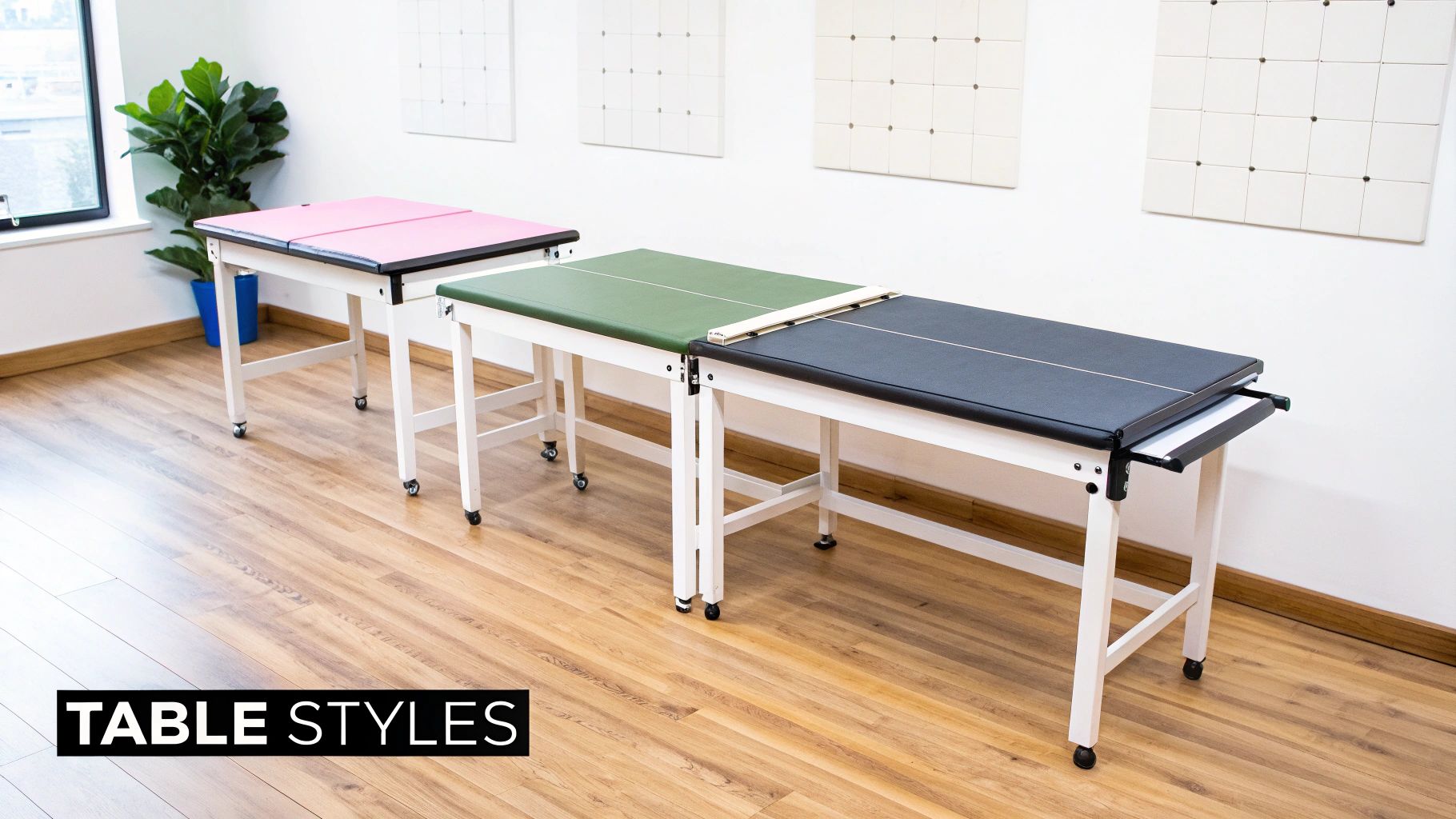
Choosing the perfect dimensions for your cutting and sewing table is about so much more than just making it fit in the room. It's a decision that directly affects your comfort, your posture, and ultimately, the quality of your work. Getting the ergonomics right can honestly be the difference between a joyful, productive sewing session and days of frustrating back pain.
Think of it this way: you wouldn't wear shoes that are two sizes too small, and the same principle applies to your main workspace. The wrong height will force you to hunch over or stretch awkwardly, leading to strain. So, before you commit, it’s vital to get out a reliable tape measure and properly map out your available space against the table you're considering.
Finding Your Ideal Table Height
The most critical measurement to get right is the height, and this all comes down to how you plan to work. Most of your time will be spent either cutting fabric or operating your sewing machine, and each task has very different ergonomic demands.
-
For Standing to Cut: The sweet spot is a height similar to a standard kitchen counter, usually somewhere between 34 to 38 inches (86-96 cm). This height lets you stand upright with your elbows bent at a comfortable 90-degree angle, giving you the leverage and control you need for a rotary cutter without straining your back or shoulders.
-
For Sitting to Sew: When you're at the machine, your feet should sit flat on the floor, and your arms should again rest at that 90-degree angle to the sewing bed. This is almost always a much lower height than what’s comfortable for cutting.
Because these two ideal heights are so different, adjustable-height tables are an excellent investment. They give you the versatility to shift from a comfortable standing position for cutting to an ergonomic seated position for sewing with minimal fuss.
Determining the Right Surface Area
Once you’ve got the height sorted, the next piece of the puzzle is the surface area. The size you need is dictated entirely by the kinds of projects you love to make. A quilter wrestling with a king-size bedspread has completely different needs from someone tailoring a small child’s dress.
Think about the largest projects you typically tackle. You’ll want a surface wide enough to lay your fabric out in a single layer, as this is the best way to prevent inaccurate cuts caused by awkward folds or overhang. A generous surface also gives you that much-needed elbow room for your patterns, tools, and notions, keeping everything within easy reach.
If space is at a premium, remember that clever storage can do wonders for keeping your worktop clear. You can find more ideas in our guide on choosing a https://www.displayguru.co.uk/blogs/news/sewing-table-with-storage.
At the end of the day, taking the time to choose the right size and height is a real investment in both your health and your craft.
Getting to Grips with Materials and Build Quality
The lifespan of a cutting and sewing table really boils down to its materials and how well it's put together. It's a bit like buying a good winter coat; you can tell more from the quality of the fabric and the stitching than from its looks on the hanger. Once you know what goes into a good table, you can spot quality like a pro and make an investment that will see you through years of projects.
The frame is the skeleton of your table, and it's what gives it its core strength. Nothing is more frustrating—or leads to more wonky cuts—than a wobbly table. So, paying close attention to what the frame is made of is non-negotiable.
The Foundation: The Table Frame
You'll generally come across three main materials for table frames: steel, solid wood, and particleboard. Each has its own set of pros and cons.
-
Steel Frames: For rock-solid stability and durability, steel is the gold standard. You'll often find welded steel frames on professional or industrial-grade tables because they offer incredible rigidity. This means no wobbling, even when you're working with heavy fabrics or applying a lot of pressure. It's the best choice for serious makers who can't afford any mistakes.
-
Solid Wood: A solid wood frame offers that classic look and feel, plus it's incredibly sturdy. It provides a heavy, reliable base that won't shift around while you're working. The trade-off is that they tend to be heavier and often carry a higher price tag, but they're built to last a lifetime.
-
Particleboard or MDF: These engineered woods are the go-to for more budget-friendly and flat-pack tables. For light to moderate sewing and crafting, they do the job just fine. While they don't have the same brute strength as steel or solid wood, they're a practical and affordable starting point for hobbyists.
Picking the Perfect Worktop Surface
The worktop is where all the magic happens, so the surface material has a massive impact on your day-to-day workflow. You need a surface that's smooth enough for fabric to glide across effortlessly but tough enough to handle the occasional stray pin or rotary cutter.
A great worktop will also have perfectly smooth, snag-free edges. This is crucial for protecting delicate fabrics like silk or chiffon from getting caught and ruined. The most common surfaces you'll find are laminate and special self-healing mats. Laminate is a popular choice because it’s durable, easy to clean, and provides a hard, smooth surface without breaking the bank.
Your table’s surface isn't just a passive platform; it's an active tool in your creative process. A surface that stands up to wear and tear while letting your fabric move freely is fundamental to getting clean, professional results every single time.
Ultimately, spotting quality construction is all about paying attention to these little details. Look for sturdy leg attachments, check for smooth edges, and choose a frame material that matches how often you plan to use it. When you know what you’re looking for, you can confidently pick from the many cutting sewing tables available, knowing you’ve found one that offers both stability and a long, productive life.
Essential Features That Boost Your Workflow
https://www.youtube.com/embed/PXTC4JbgALM
The best cutting and sewing tables do more than just sit there; they become active partners in your creative process. Certain features are designed to solve those little frustrations that can throw you off your rhythm, turning a potentially chaotic workflow into something smooth and efficient. When you know what to look for, you can choose a table with additions that will genuinely improve how you work.
Think about never having to hunt for your good scissors or that elusive rotary cutter again. That's the magic of well-thought-out, integrated storage.
Features like built-in drawers, shelves, and even thread spool holders are more than just conveniences—they’re workflow optimisers. Keeping your most-used tools within arm’s reach helps you stay in the creative zone without interruption.
This kind of built-in organisation is a game-changer. For more ideas on getting your space in order, check out our guide on sewing room organisation.
Smart Additions for Flexibility and Precision
Beyond simple storage, many modern tables include dynamic features that adapt to the project at hand. These clever additions are all about giving you more flexibility and accuracy, saving you time and effort with every stitch.
- Lockable Casters: Wheels give you the best of both worlds. You can effortlessly move your table to catch the best light or simply get it out of the way, but once you lock the casters, it's a rock-solid, stable surface to work on.
- Built-in Measuring Grids: Having a grid printed directly on the tabletop can be incredibly useful. It often means you can skip grabbing a separate cutting mat for quick, straight cuts and squaring up fabric, making the whole process faster and more precise.
- Extension Leaves: If you ever tackle large-scale projects like quilts or long, flowing dresses, drop-leaf extensions are an absolute must. They provide a massive, uninterrupted surface when you need it and fold down neatly to save space when you don't.
Advanced and Professional-Grade Options
For serious hobbyists or professionals, the features can get even more specialised. For instance, if you often buy fabric on the roll, a table with a built-in fabric roll holder is a fantastic addition. It keeps your material tidy, off the floor, and ready to be measured out at a moment's notice.
Technology is also finding its way into these essential pieces of furniture. At the high end of the market, you'll find automated cutting tables with incredible innovations, like optical systems that can match patterns with sub-millimetre accuracy. It’s a glimpse into the future of smarter, more integrated workshops. You can dive deeper into these automated cutting advancements on textileworld.com. These features show how a simple table can evolve into a central hub of productivity.
Setting Up and Maintaining Your Workspace
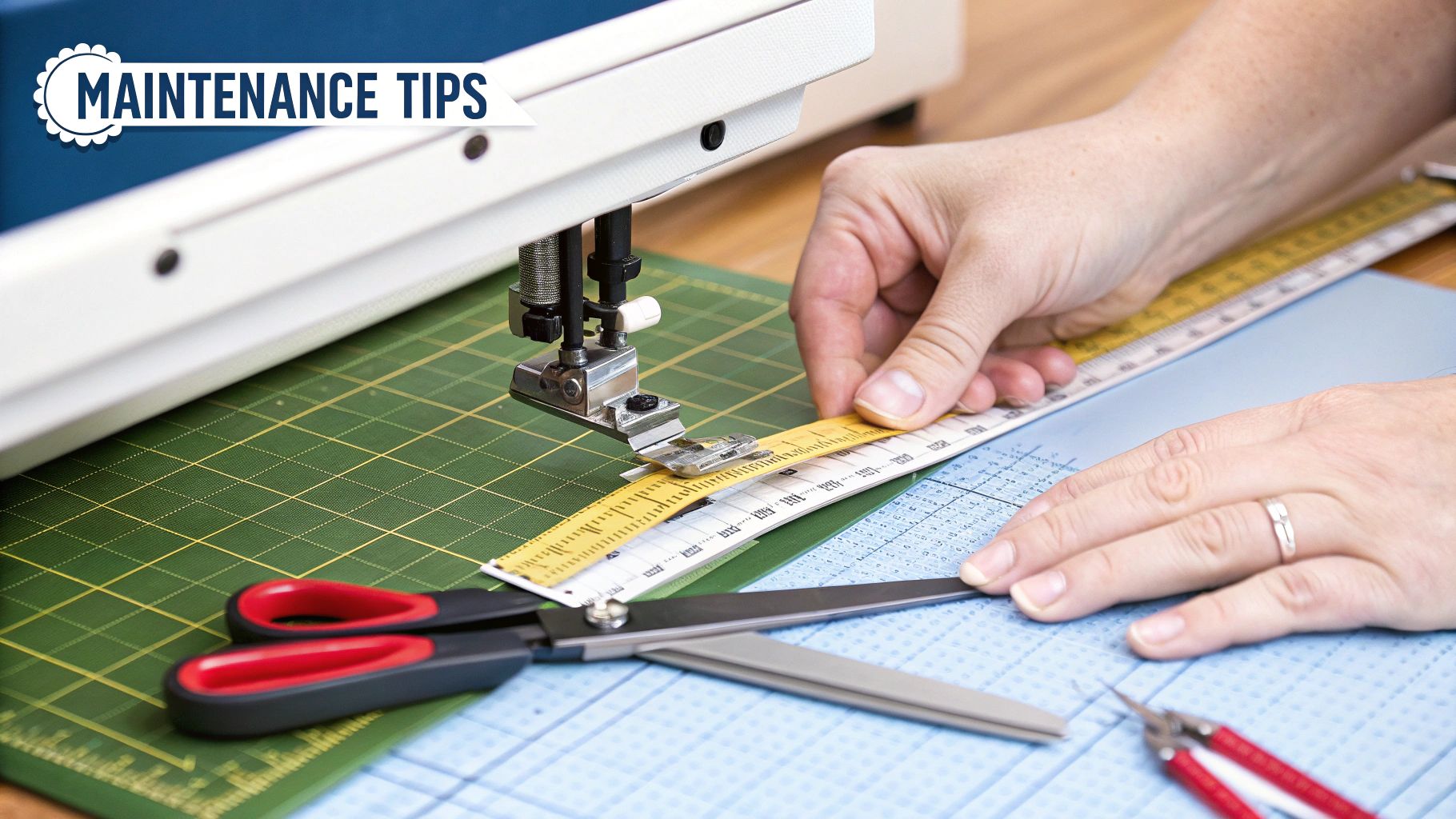
You’ve invested in a fantastic new table – the very heart of your sewing room. With a little care and thoughtful setup, it’ll be a reliable partner in your craft for years to come. Getting the assembly, placement, and maintenance right from the start is the key to unlocking its full potential.
Most tables arrive flat-packed, and while assembly is usually straightforward, it pays to take your time. Follow the instructions to the letter and, crucially, grab a spirit level. Ensuring the worktop is perfectly flat is a small step that makes a huge difference, preventing your fabric from sliding and guaranteeing every cut is spot-on.
Creating an Efficient Workspace
Where you put your table is just as important as how you build it. If you can, position it near a window to take advantage of natural light. This isn’t just pleasant; it reduces eye strain and helps you see the true colours of your fabrics. Think about the workflow of your room, too. You’ll want enough space to move freely around all sides of the table, which is a lifesaver when you’re wrestling with a large piece of material.
A well-organised workspace is about more than just tidiness; it’s about creating an environment where your tools support your creativity instead of hindering it. Your table should be the hub of an efficient, inspiring setup.
Keeping your most-used tools close at hand is a non-negotiable for a smooth workflow. For more great ideas on keeping everything from pins to thread in its place, our guide to choosing a sewing organiser box has some fantastic tips.
Long-Term Care and Maintenance
A little regular upkeep will keep your cutting and sewing table in top-notch condition. What this looks like will depend on the surface material you chose.
- Laminate Surfaces: A quick wipe with a soft, damp cloth and a gentle, non-abrasive cleaner is all you need. Steer clear of harsh chemicals that could damage the finish.
- Wooden Surfaces: Dust regularly and treat it with a wood-specific polish every so often. Be sure to wipe up any spills right away to avoid stains or warping.
- Self-Healing Mats: Simply wipe them down with a damp cloth. For a deeper clean, a tiny bit of gentle soap and a good rinse will do the trick.
Make it a habit to periodically check and tighten all the screws and fittings, especially if your table is foldable or adjustable. This simple check stops any wobbles from developing and keeps the table sturdy and safe. This kind of care is vital for equipment that gets so much use, a fact reflected in market trends. In fact, the European fabric cutting table market, with the UK as a major contributor, is expected to expand to USD 1.8 billion by 2033. You can read more about the growth of the fabric cutting table market on marketresearchintellect.com.
Answering Your Final Questions
Even after you've weighed up all the options, a few questions tend to linger. Getting these last few details ironed out is what helps you make a choice you’ll be happy with for years to come.
We’ve pulled together the most common queries we hear to give you clear, practical answers and help you invest with confidence.
Functionality and Ergonomics
Can’t I just use my dining room table?
We've all been there! While a dining table works in a pinch, it’s not built for the job. Most are too low for cutting fabric comfortably while standing, which is a fast track to an aching back and sore shoulders. Plus, the surface can get scratched by pins and rotary cutters, and some finishes can even snag delicate materials.
A proper cutting table gives you the right height for good posture, a worktop that can take a bit of a beating, and the rock-solid stability you need for truly accurate cuts.
What's the best height for a cutting table?
If you're cutting while standing, you'll want a table that's somewhere between 34 to 38 inches (86-96 cm) high—about the same as a kitchen counter. The aim is to have your elbows bent at a comfortable 90-degree angle while you work. If you plan to sit at the table to sew as well, an adjustable-height model is the gold standard for versatility and ergonomics.
Think of it this way: investing in an ergonomically sound workspace is an investment in your own well-being. The right table prevents strain, sharpens your precision, and makes the whole creative process far more enjoyable.
Space and Budget Considerations
I have a small room. What are my options?
For tight spaces, a foldable or drop-leaf cutting table is a game-changer. These clever designs give you a generous cutting surface when you need it, then pack away neatly into a slim profile that can be tucked into a cupboard or against a wall. Just be sure to measure your space first to make sure you have room to open it up fully!
Is a more expensive cutting table actually worth it?
For anyone who sews regularly, the answer is a definite yes. Pricier cutting and sewing tables usually offer far better stability, often with robust frames like welded steel. They also feature more resilient surfaces that stand up to wear and tear, and come with practical extras like height adjustment or built-in storage.
A solid, dependable table doesn't just improve your workflow—it protects your tools and fabrics and becomes a foundational piece of equipment in your craft.
At Display Guru, we provide the essential tools that bring your creative vision to life. Explore our range of high-quality equipment to build the perfect sewing studio. https://www.displayguru.co.uk
